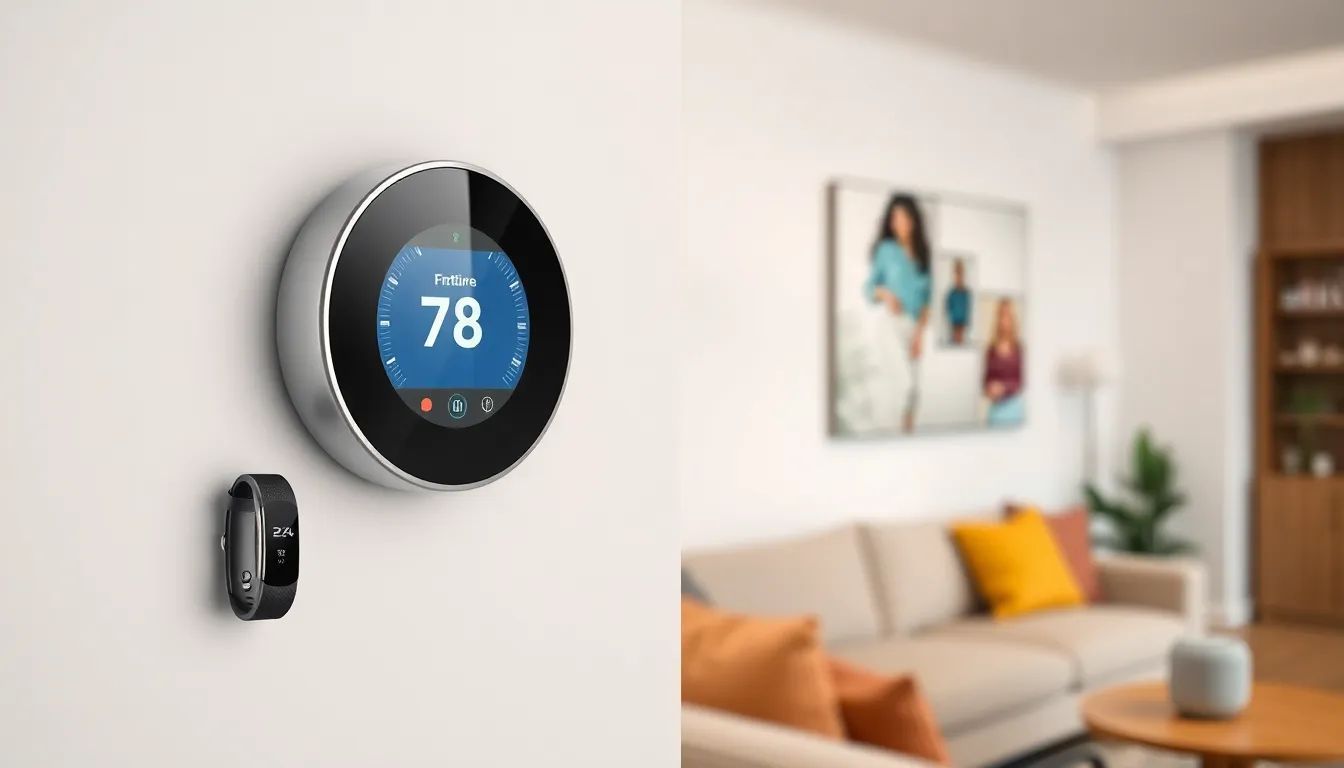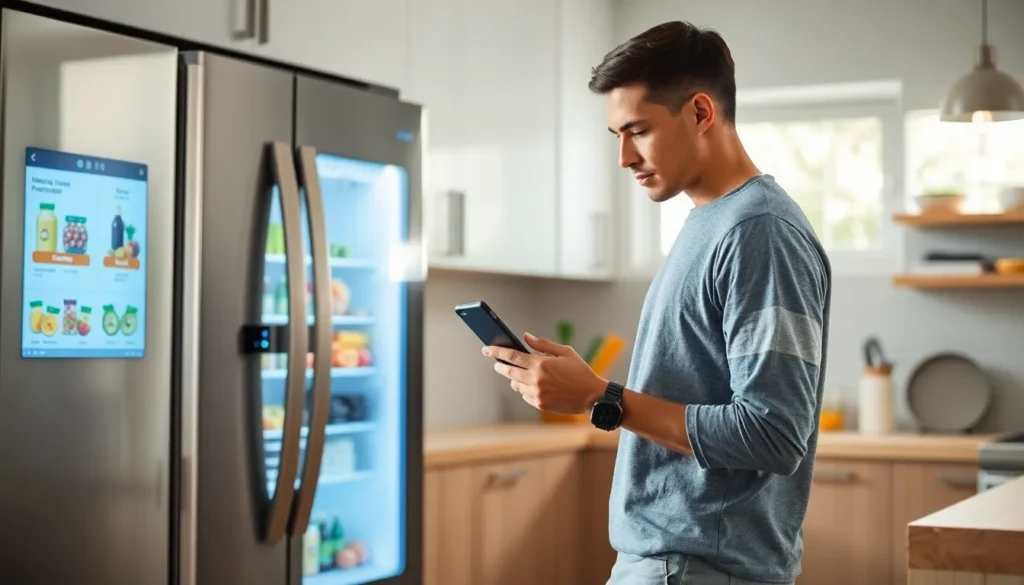Table of Contents
ToggleIn a world where your toaster might just be smarter than you, the Internet of Things (IoT) and cloud computing are shaking things up like never before. Imagine a universe where your fridge not only tells you when you’re out of milk but also orders it for you while you’re still in your pajamas. Sounds like a sci-fi movie, right? Well, welcome to reality!
Overview of Internet of Things and Cloud Computing
The Internet of Things (IoT) connects devices, enabling communication and data exchange among them. Smart appliances, such as connected fridges and thermostats, demonstrate how IoT enhances everyday life. Data generated by these devices requires efficient storage and processing, which cloud computing provides.
Cloud computing refers to using remote servers for data management instead of local servers or personal computers. This model offers flexibility, scalability, and cost savings. Combining IoT with cloud computing allows for real-time data analysis and storage.
IoT devices generate massive amounts of data daily. Cloud platforms can handle this volume and facilitate various applications, from smart home systems to industrial automation. Businesses leverage this integration to optimize operations and improve user experiences.
Security remains a critical concern in IoT and cloud computing. As devices connect and share information, protecting user data from breaches and unauthorized access becomes essential. Solutions include encryption and robust authentication protocols.
Market growth for IoT and cloud computing continues to expand. According to recent data, the global IoT market is projected to reach $1.1 trillion by 2026, driven by increased adoption across sectors. Cloud computing is expected to grow at a compound annual growth rate of 15.7%, reaching $832.1 billion by 2025.
Adoption of IoT and cloud computing fosters innovation. Industries embrace these technologies to streamline processes, reduce costs, and create new products. This synergy between connected devices and the cloud paves the way for smart cities, improved healthcare, and enhanced user experiences.
Key Components of IoT and Cloud Integration

The integration of IoT and cloud computing consists of several critical components that enable seamless communication and data management.
IoT Devices
IoT devices are physical objects equipped with sensors, software, and connectivity that enable them to collect and exchange data. Examples include smart thermostats, wearable fitness trackers, and connected appliances. These devices communicate with cloud platforms, facilitating real-time data transfer and analysis. By connecting a vast range of devices, IoT creates a network that responds instantaneously to changes, enhancing user experiences. As more devices become interconnected, the overall efficiency of operations improves significantly.
Cloud Infrastructure
Cloud infrastructure provides the foundation for storing, managing, and processing data generated by IoT devices. Resources such as servers, storage systems, and databases are utilized to handle the massive amounts of data produced. Cloud platforms also support scalability, allowing organizations to adjust their resources based on demand. This adaptability is crucial for managing varying data loads effectively. Cloud infrastructure ensures data accessibility from any location, promoting collaboration and innovation across industries. Enhanced security measures protect user data while maintaining compliance with regulatory standards.
Benefits of Combining IoT with Cloud Computing
Combining IoT with cloud computing offers numerous advantages. These benefits mainly revolve around improved efficiency and enhanced capabilities.
Enhanced Data Storage
Enhanced data storage becomes essential as IoT devices generate significant volumes of data. Cloud computing solutions provide scalable storage options, allowing businesses to expand their capacity effortlessly. Multiple cloud providers offer secure environments for sensitive information. With centralized data management, organizations can access and retrieve data quickly. Cost-effectiveness arises as companies only pay for the storage they use. Organizations optimize their resources better, leading to smarter data handling.
Real-Time Analytics
Real-time analytics transform the capabilities of IoT systems. Cloud computing enables instantaneous data processing, allowing businesses to make informed decisions promptly. Access to analytics tools enhances the interpretation of data generated by IoT devices. Insights gained facilitate improved operational efficiency. Companies pinpoint trends and anomalies as they emerge, enabling proactive measures. The integration boosts the decision-making process, supporting swift responses to various situations. Overall, effective analytics enhance user experiences across multiple sectors.
Challenges in Internet of Things and Cloud Computing
Combining IoT and cloud computing faces multiple challenges that affect their effectiveness and adoption.
Security Concerns
Cybersecurity threats pose significant risks in IoT and cloud environments. Hackers target vulnerable devices, aiming to gain unauthorized access to sensitive data. Securing each IoT device becomes paramount, as a single breach can compromise an entire network. Data encryption offers a layer of protection, but its implementation can be complex. Additionally, compliance with regulations like GDPR and HIPAA is mandatory, necessitating robust security measures. Regular updates and continuous monitoring are crucial to safeguard against evolving threats. Businesses must invest in comprehensive security frameworks to mitigate risks effectively.
Scalability Issues
Scalability remains a fundamental concern with IoT and cloud integration. As IoT devices proliferate, managing the increasing data load becomes challenging. Cloud infrastructures must provide sufficient resources to accommodate the growth without performance degradation. Elastic scalability, enabling on-demand resource allocation, is essential to meet fluctuating demands. Organizations often struggle with capacity planning and resource optimization, which can hinder responsiveness. Implementing automated scaling solutions can enhance agility and ensure that systems adapt to user needs in real-time. Properly addressing these challenges promotes seamless growth and operational efficiency.
Future Trends in IoT and Cloud Computing
Emerging trends suggest significant advancements in IoT and cloud computing. Increased connectivity remains pivotal as 5G networks enable faster data transfer and improved device interaction. Enhanced machine learning capabilities facilitate predictive analytics, allowing businesses to anticipate user needs with greater accuracy.
Growth in edge computing stands out as well. By processing data closer to the source, this approach reduces latency and bandwidth usage. Organizations gain faster insights while alleviating pressure on central cloud infrastructures. As a result, smart cities and industrial automation benefit significantly from these developments.
Sustainability trends will shape future IoT solutions. Companies increasingly prioritize energy-efficient devices and eco-friendly cloud practices. This shift not only aligns with consumer demand but also supports regulatory compliance aimed at reducing carbon footprints.
Security advancements will play a crucial role in the evolution of IoT and cloud technologies. Innovations in encryption and authentication mechanisms help address escalating cyber threats. Organizations investing in adaptive security frameworks can enhance user trust and ensure compliance with global standards.
Collaboration among industry players emerges as a vital trend. Partnerships between cloud service providers and IoT manufacturers can optimize capabilities and create comprehensive solutions. Such cooperation leads to integrated platforms that support diverse applications across multiple sectors.
Market growth remains robust. Projections suggest that the global IoT market could reach $1.1 trillion by 2026, while cloud computing could expand to $832.1 billion by 2025. Companies investing in these technologies stand poised to leverage new opportunities and drive innovation across industries.
The synergy between the Internet of Things and cloud computing is reshaping industries and enhancing everyday experiences. As these technologies evolve they promise to unlock unprecedented efficiencies and capabilities. Businesses are poised to harness real-time data insights driving innovation and improving operational performance.
Addressing security and scalability challenges will be essential for maximizing the benefits of this integration. With advancements in connectivity and machine learning the future looks bright for IoT and cloud computing. Organizations that embrace these trends will not only stay competitive but also contribute to a more connected and efficient world.







